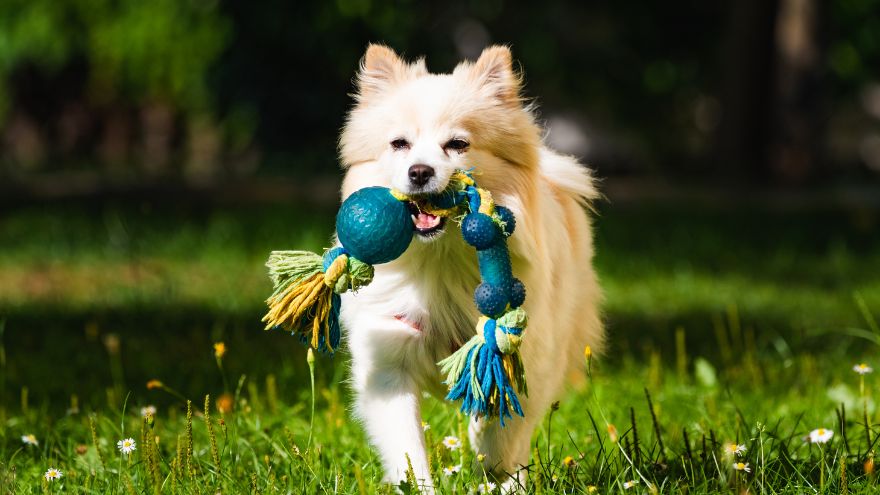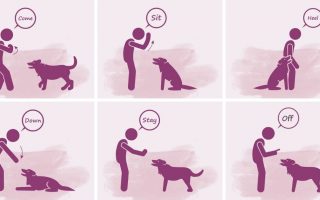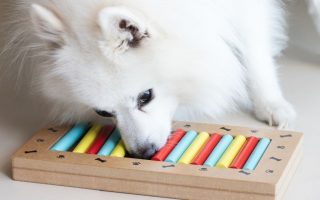Teaching your dog how to fetch things may sound like a simple thing to do. However, in reality, it may not be as easy to accomplish as it sounds.
Dogs react in different ways when teaching the fetch command.
Certain dogs, like Labrador Retrievers and Border Collies, can quickly grasp the concept of the fetch command. However, other dog breeds may take a bit longer to do so.
Here is a guide to successfully teach your dog the fetch command.
Step-By-Step Guide on Training Your Dog to Fetch
You must be very patient when training your dog on the fetch command. However, your dog should not feel that you are frustrated.
Over time, your pet will grasp this new concept and be a pro at it.
So, let’s look at how you can accomplish this task with your dog:
Step 1: Choose the Correct Fetch Toy
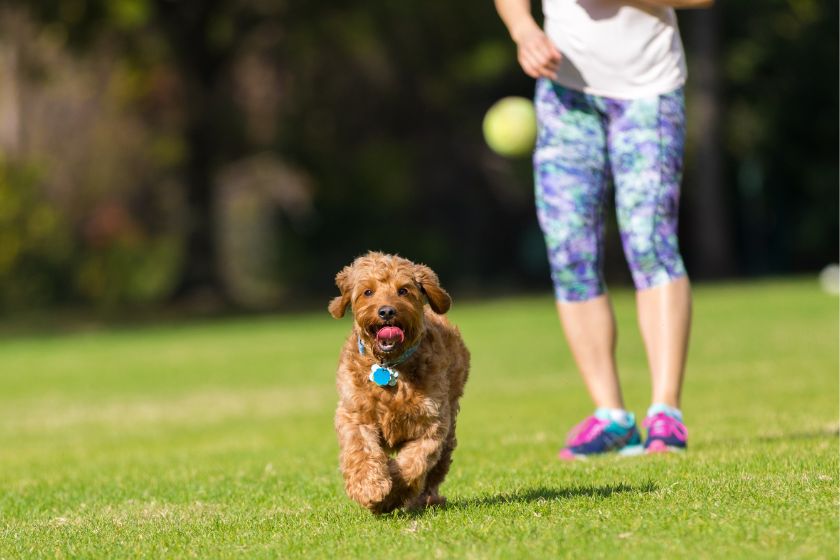
Choosing the right toy is one of the most important steps in teaching the fetch command to your dog. Make sure to pick a toy that your dog likes.
Popular options include tennis balls, frisbees, squeaker footballs, rubber bumpers, rope toys, and plush toys in various animal shapes.
Step 2: Teach Your Dog the Concept of ‘Dropping’ the Toy
Once you have picked the right toy for your dog, you need to teach it the concept of dropping the toy.
First, hold the toy in your hand and wave it in front of your dog to make it noticeable. Then ask your dog to take the toy.
Once your dog grabs the toy from you, ask it to drop it. Repeat this several times until your dog knows what to do when you give the ‘drop it’ command.
Being consistent with the command helps your dog to show the expected behavior.
Step 3: Play Bait-and-Switch with Your Dog
This step is to make your dog bring back the toy to you. You need to keep two toys in hand to do this. Throw one toy and let your dog go behind it.
Once your dog picks up the first toy, throw the second one.
Then your dog will drop the first toy and go for the second. The bait-and-switch method is important to prevent your dog from keeping away during play.
What if Your Dog isn’t Interested in Retrieving Toys?
Sometimes, your dog may show a lack of interest in playing with you. It may not respond to commands like ‘drop it,’ and you will see no progress in your training.
If this happens, you need to be patient and follow the below methods to make your dog interested in the training.
Teach the ‘Drop It’ Command in a Small Passageway
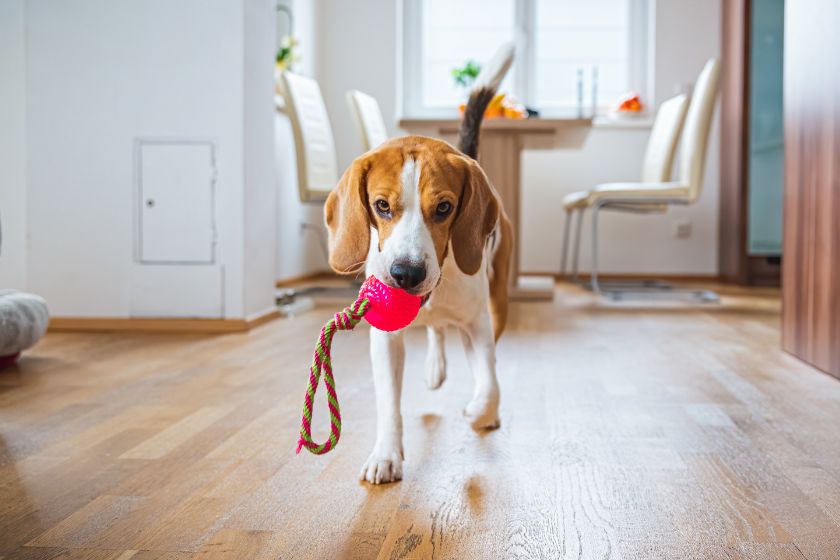
If your dog runs away from you with the toy, playing in a small passageway is ideal.
There is less room for your dog to get distracted, and it will be inclined to return to you with the toy.
Introduce the Command by Throwing the Toy a Short Distance
If your dog doesn’t show interest in returning the toy to you, you need to start small.
First, throw the toy a short distance and gradually work your way up to long distances.
Once your dog gets used to bringing back the toy to you from a short distance, it will automatically do the same when you gradually increase the stretch.
Try Training the ‘Bring It’ Command
The ‘bring it’ command is ideal to try if your dog has a habit of dropping the ball before returning it to you.
Throw the ball and let your dog chase it. Do take note of the point where it drops the toy.
After a few times, say the ‘bring it’ command where your dog usually drops the toy. Give the command and run backwards and let your dog follow you.
Do this until you come to the starting point where you ask your dog to ‘drop it.’
Tips On Teaching Your Dog The ‘Fetch’ Command
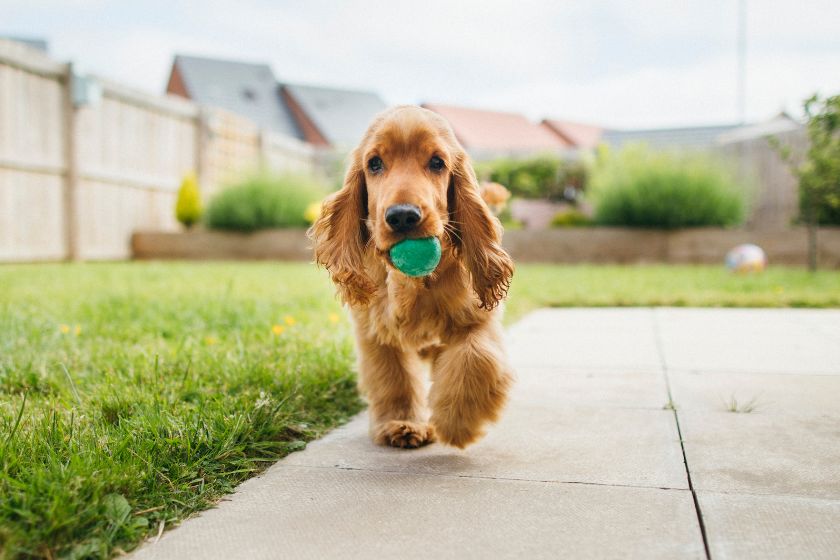
Here are a few tips you can follow to successfully teach your dog the ‘fetch’ command.
Use Specific Phrases And Actions Consistently
Dogs are good at building comprehension with words. Use specific phrases together with their actions consistently.
It will help your dog understand and learn the behavior identified by each command.
Use Treats And Hugs To Reinforce Behavior
Treating your dog with rewards is always a good way to encourage good behavior in your dog.
Praise your dog and hug them once they manage to bring the toy back to you.
Let them know that you like it. But, most importantly, don’t forget to keep a few treats in your pocket so that you can give them to your dog to reinforce good behavior.
Introduce New Challenges to Beat Boredom
Dogs will naturally get bored of playing the same game of fetch every time. So you need to add variations to make it more interesting for your pet.
Do some changes like holding your dog by its collar to let it wait a bit before fetching the toy.
You can even introduce the ‘wait’ command to make your dog wait before retrieving the toy.
Train with a Ball in Hand
You can teach your dog an additional command like ‘give it.’ Instead of dropping it, it will teach your dog to give you the ball/toy.
Practice the ‘give it’ command several times with your dog, moving farther away each time.
It will help your dog grasp the command and know that it should not drop the toy until you get it to your hand.
Run With Your Dog
Sometimes your dog might not show interest in chasing the toy you throw.
To help your dog get over this habit, you should run after the toy. Your dog will see this and come running behind you.
Praise your dog for this. Your dog likes to see you pleased about itself, so it will gradually get used to chasing the toy.
Get the Toy Back to You
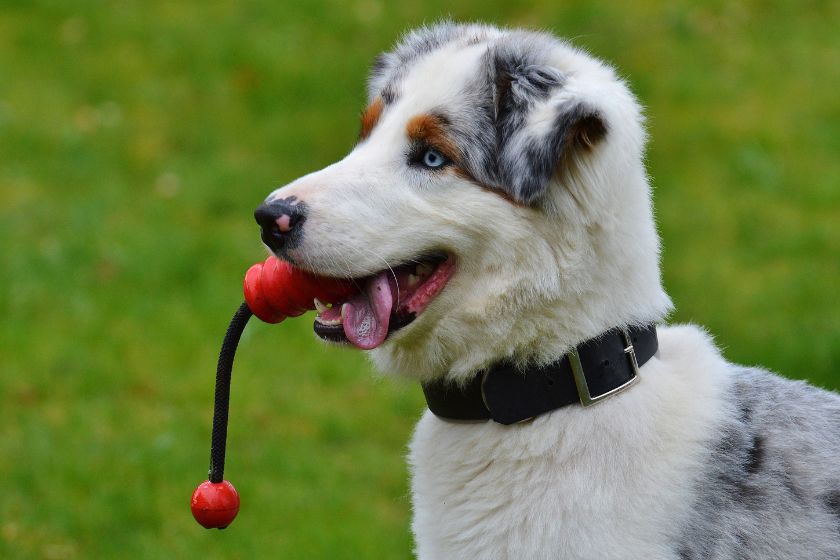
At times, dogs will fetch the ball but not give it to you. Your dog will want to play a game with you expecting you to chase it to get the toy.
At this point, what you need to do is to give the ‘drop it’ command. Once your dog drops the toy, reward it with treats and praises.
Then it will gradually get used to obeying the commands you give.
You can also add variations during playtime, like adding treats inside the toy.
Your dog will be excited to find out what’s inside the toy; it will obey your command looking forward to the treat.
Training Your Dog With a Collar
Training collars are excellent tools to use in dog training. They work by sending signals through a transmitter put around your dog’s neck.
You can press the button on the remote in your hand when you see your dog displaying unwanted behavior.
It will send a slight shock to your dog’s neck that startles your dog. It will help interrupt the unwanted behavior.
If you use shock collars with the correct intensity level, it is a great device for enforcing good behavior in your dog.
However, make sure you use the lowest intensity possible on your dog.
Remember to enforce positive reinforcement training when training your dog with a shock collar.
Rewarding your dog with treats will always encourage your dog to display the behavior you want.
How old should my dog be to teach it the ‘fetch’ command?
You can start teaching your puppy the ‘fetch’ command once it is at least 2 to 3 months.
At this age, puppies are ready to learn the commands you teach, and they are also able to map specific phrases to actions.
What is the easiest and fastest method to successfully teach my dog the ‘fetch’ command?
The best way to teach your dog the ‘fetch’ command is to make sure you reward it once it obeys the command.
This behavior encourages your dog to obey you more and do what you ask it to do.
Why does my dog not like to fetch toys?
Dogs might show disinterest in fetching toys you throw because they might see this as a boring activity.
Make it interested in playing the game by giving it treats each time it manages to retrieve the toy.
How long should my dog play fetch?
If your dog is interested in playing ‘fetch’, you can easily play it for at least half an hour. Playing the same game for too long can make your dog get bored of it quickly.
You can also mix different activities like taking your dog for a walk to make sure it doesn’t get bored doing the same thing repeatedly.
Conclusion
As you can see, training your dog to fetch is not a big deal. With a few tips in your mind, you can easily train it to work according to your commands.
However, it does take some time to train your dog with different commands, so being patient is key. Make sure you don’t show your frustration to your dog.
If you fail one day, try again the next. Over time, things will get much better, and soon you will have a well-trained dog.

